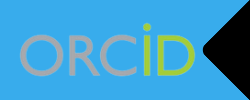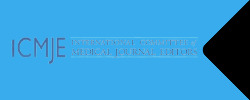The Relationship Between Thyroid Disorders and Trace Elements: A Systematic Analysis
Research Article
DOI:
https://doi.org/10.5281/zenodo.8321250Keywords:
Thyroid, Trace Elements, Autoimmune Thyroid Diseases, Hyperthyroidism, HypothyroidismAbstract
Trace elements such as iodine (I) and selenium (Se) are vital to human health and play an important role in metabolism. They are also important for thyroid metabolism and function and are associated with thyroid autoimmunity and tumors. Other minerals such as iron (Fe), lithium (Li), copper (Cu), zinc (Zn), manganese (Mn), magnesium (Mg), cadmium (Cd), and molybdenum (Mo) may be associated with thyroid function. Normal thyroid function depends on various trace elements for thyroid hormone synthesis and metabolism. These trace elements interact with each other and are in a dynamic balance. However, this balance can be disrupted by an excess or deficiency of one or more elements, which can lead to abnormal thyroid function and the development of autoimmune thyroid diseases and thyroid tumors. The relationship between trace elements and thyroid disorders is still unclear, and more research is needed to clarify this issue and improve understanding of the impact of trace elements on thyroid function and metabolism. This review systematically reviews the recently published literature on the relationship between various trace elements and thyroid function.
References
Zaichick V, Tsyb AF, Vtyurin BM. Trace elements and thyroid cancer. Analyst. 1995;120(3):817–821.
Cooper DS. Subclinical thyroid disease: consensus or conundrum? Clin. Endocrinol. 2004;60(4):410–412.
Zimmermann MB, Boelaert K. Iodine deficiency and thyroid disorders. Lancet Diabetes Endocrinol. 2015;3(4):286–295.
Laurberg P, Cerqueira C, Ovesen L, et al. Iodine intake as a determinant of thyroid disorders in populations. Best Pract. Res. Clin.Endocrinol.Metab. 2010;24(1):13–27.
Liu XH, Chen GG, Vlantis AC, et al. Iodine mediated mechanisms and thyroid carcinoma. Crit. Rev. Clin. Lab. Sci. 2009;46(5-6):302–318.
Vagenakis AG, Braverman LE. Adverse effects of iodides on thyroid function. Med. Clin. North Am. 1975;59(5):1075–1088.
Farebrother J, Zimmermann MB. Andersson M. Excess iodine intake: sources, assessment, and effects on thyroid function. Ann. N. Y. Acad. Sci. 2019;1446(1):44–65.
Aghini Lombardi F, Fiore E, Tonacchera M, et al. The effect of voluntary iodine prophylaxis in a small rural community: the pescopagano survey 15 years later. J. Clin.Endocrinol.Metab. 2013;98(3):1031–1039.
Duntas LH. The catalytic role of iodine excess in loss of homeostasis in autoimmune thyroiditis.Curr.Opin.Endocrinol. Diabetes Obes. 2018;25(5):347–352.
Pedersen IB, Knudsen N, Carle A, et al. A cautious iodization programme bringing iodine intake to a low recommended level is associated with an increase in the prevalence of thyroid autoantibodies in the population. Clin.Endocrinol. 2011;75(1):120–126.
Ruggeri RM, Trimarchi F. Iodine nutrition optimization: are there risks for thyroid autoimmunity? J. Endocrinol.Invest. 2021;44(9):1827–18235.
Wang F, Wang Y, Wang L, et al. Strong association of high urinary iodine with thyroid nodule and papillary thyroid cancer. Tumour Biol. 2014;35(11):11375–11379.
Guan H, Ji M, Bao R, et al. Association of high iodine intake with the T1799A BRAF mutation in papillary thyroid cancer. J. Clin.Endocrinol.Metab. 2009;94(5):1612–1617.
Boltze C, Brabant G, Dralle H,et al. Radiation-induced thyroid carcinogenesis as a function of time and dietary iodine supply: An in vivo model of tumorigenesis in the rat. Endocrinology. 2002;143(7):2584–2592.
Kim HJ, Kim NK, Park HK, et al. Strong association of relatively low and extremely excessive iodine intakes with thyroid cancer in an iodine-replete area. Eur. J. Nutr. 2017;56(3):965–971.
Liu Y, Huang H, Zeng J, et al. Thyroid volume, goiter prevalence, and selenium levels in an iodine-sufficient area: A cross-sectional study. BMC Public Health, 2013;13:1153.
Kohrle J. Selenium and the thyroid. Curr.Opin.Endocrinol. Diabetes Obes. 2015; 22(5):392–401.
Bulow Pedersen I, Knudsen N, Carle A, et al. Serum selenium is low in newly diagnosed graves’ disease: a population-based study. Clin.Endocrinol. 2013;79(4):584–590.
Derumeaux H, Valeix P, Castetbon K, et al. Association of selenium with thyroid volume and echostructure in 35- to 60-year-old French adults. Eur. J. Endocrinol. 2003;148(3):309–315.
Wertenbruch T, Willenberg HS, Sagert C, et al. Serum selenium levels in patients with remission and relapse of graves’ disease. Med. Chem. 2007;3(3):281–284.
Khong JJ, Goldstein RF, Sanders KM, et al. Serum selenium status in graves’ disease with and without orbitopathy: A case-control study. Clin.Endocrinol. 2014;80(6):905–910.
Dehina N, Hofmann PJ, Behrends T, et al. Lack of association between selenium status and disease severity and activity in patients with graves’ ophthalmopathy. Eur. Thyroid J. 2016;5(1):57–64.
Wang Y, Zhao F, Rijntjes E, et al. Role of selenium intake for risk and development of hyperthyroidism. J. Clin.Endocrinol.Metab. 2019;104(2):568–580
Wang L, Wang B, Chen SR, et al. Effect of selenium supplementation on recurrent hyperthyroidism caused by graves’ disease: A prospective pilot study. Horm.Metab. Res. 2016;48(9):559–564.
Stoedter M, Renko K, Hog A, et al. Selenium controls the sex-specific immune response and selenoprotein expression during the acute-phase response in mice. Biochem. J. 2010;429(1):43–51.
Broome CS, McArdle F, Kyle JA, et al. An increase in selenium intake improves immune function and poliovirus handling in adults with marginal selenium status. Am. J. Clin.Nutr. 2004;80(1):154–162.
Wang W, Xue H, Li Y, et al. Effects of selenium supplementation on spontaneous autoimmune thyroiditis in NOD.H-2h4 mice. Thyroid. 2015;25(10):1137–1144.
Wichman J, Winther KH, Bonnema SJ, et al. Selenium supplementation significantly reduces thyroid autoantibody levels in patients with chronic autoimmune thyroiditis: A systematic review and meta-analysis. Thyroid. 2016;26(12):1681–1692.
Glattre E, Nygard JF, Aaseth J. Selenium and cancer prevention: observations and complexity. J. Trace Elem. Med. Biol. 2012;26(2-3):168–169.
Combs GF. Current evidence and research needs to support a health claim for selenium and cancer prevention. J. Nutr. 2005;135(2):343–347.
Rayman MP. Selenium and human health.Lancet. 2012;379(9822):1256–1268.
Kohrle J, Jakob F, Contempre B, et al. Selenium, the thyroid, and the endocrine system. Endocr. Rev. 2005;26(7):944–984.
Drutel A, Archambeaud F, Caron P. Selenium and the thyroid gland: more good news for clinicians. Clin. Endocrinol. 2013;78(2):155–164.
Feng XL, Qu YK, Zhao MT, et al. Effect of selenium yeast on TgAb and TG in patients with differentiated thyroid carcinoma after total resection medical diet and health. Med. Food Ther. Health. 2021;19(2):137–138.
Stuss M, Michalska-Kasiczak M, Sewerynek E. The role of selenium in thyroid gland pathophysiology.Endokrynol Pol. 2017;68(4):440–465.
Zimmermann MB, Zeder C, Chaouki N, et al. Dual fortification of salt with iodine and microencapsulated iron: a randomized, double-blind, controlled trial in Moroccan schoolchildren. Am. J. Clin.Nutr. 2003;77(2):425–432.
Yucel R, Ozdemir S, Dariyerli N, et al. Erythrocyte osmotic fragility and lipid peroxidation in experimental hyperthyroidism. Endocrine. 2009;36(3):498–502.
Beard JL, Brigham DE, Kelley SK, et al. Plasma thyroid hormone kinetics are altered in iron-deficient rats. J. Nutr. 1998;128(8):1401–1408.
Antel JP, Moumdjian R. Paraneoplastic syndromes: a role for the immune system. J.Neurol. 1989;236(1):1-3.
Izawa T, Yamate J, Franklin RJ, et al. Abnormal iron accumulation is involved in the pathogenesis of the demyelinating dmy rat but not in the hypomyelinating mv rat. Brain Res. 2010;1349:105–114.
Chisholm M. The association between webs, iron and post-cricoid carcinoma.Postgrad Med. J. 1974;50(582):215–219.
Lazarus JH. Lithium and thyroid.Best Pract. Res. Clin.Endocrinol.Metab. 2009; 23(6):723–733.
Bauer M, lumentritt H, Finke R, et al. Using ultrasonography to determine thyroid size and prevalence of goiter in lithium-treated patients with affective disorders. J. Affect Disord. 2007;104(1-3):45–51.
Vandendriessche B, Lapauw B, Kaufman JM, et al. A practical approach towards the evaluation of aberrant thyroid function tests.Acta Clin. Belg. 2020;75(2):155–162.
Miller KK, Daniels GH. Association between lithium use and thyrotoxicosis caused by silent thyroiditis.Clin.Endocrinol. 2001;55(4):501–508.
Liu YY, Van der Pluijm G, Karperien M, et al. Lithium as adjuvant to radioiodine therapy in differentiated thyroid carcinoma: clinical and in vitro studies. Clin.Endocrinol. 2006; 64(6):617–624.
Luo H, Tobey A, Auh S, et al. The effect of lithium on the progression-free and overall survival in patients with metastatic differentiated thyroid cancer undergoing radioactive iodine therapy.Clin.Endocrinol. 2018;89(4):481–488.
Schou M, Amdisen A, Eskjaer Jensen S, et al. Occurrence of goitre during lithium treatment. Br. Med. J. 1968;3(5620):710–713.
Klein PS, Melton DA. A molecular mechanism for the effect of lithium on development. Proc. Natl. Acad. Sci. U.S.A. 1996;93(16):8455–8459.
Van Melick EJ, Wilting I, Meinders AE, et al. Prevalence and determinants of thyroid disorders in elderly patients with affective disorders: Lithium and nonlithium patients. Am. J. Geriatr. Psychiatry. 2010;18(5):395–403.
Waldman SA, Park D. Myxedema coma associated with lithium therapy. Am. J. Med. 1989;87(3):355–356.
Shopsin B, Shenkman L, Blum M, et al. Iodine and lithium-induced hypothyroidism. documentation of synergism. Am. J. Med. 1973;55(5):695–699.
Maouche N, Meskine D, Alamir B, et al. Trace elements profile is associated with insulin resistance syndrome and oxidative damage in thyroid disorders: Manganese and selenium interest in Algerian participants with dysthyroidism. J. Trace Elem. Med. Biol. 2015;32:112–121.
Zhang F, Liu N, Wang X, et al. Study of trace elements in blood of thyroid disorder subjects before and after 131I therapy. Biol. Trace Elem. Res. 2004;97(2):125–134.
Liu Y, Liu S, Mao J, et al. Serum trace elements profile in graves’ disease patients with or without orbitopathy in northeast China. BioMed. Res. Int. 2018;p:3029379.
Blazewicz A, Dolliver W, Sivsammye S, et al. Determination of cadmium, cobalt, copper, iron, manganese, and zinc in thyroid glands of patients with diagnosed nodular goitre using ion chromatography. J. Chromatogr.B Analyt.Technol. BioMed. Life Sci. 2010;878(1):34–38.
Rezaei M, Javadmoosavi SY, Mansouri B, et al. Thyroid dysfunction: how concentration of toxic and essential elements contribute to risk of hypothyroidism, hyperthyroidism, and thyroid cancer. Environ. Sci. Pollut. Res. Int. 2019;26(35):35787–35796.
Betsy A, Binitha M, Sarita S. Zinc deficiency associated with hypothyroidism: an overlooked cause of severe alopecia. Int. J. Trichol. 2013;5(1):40–42.
Ertek S, Cicero AF, Caglar O, et al. Relationship between serum zinc levels, thyroid hormones and thyroid volume following successful iodine supplementation. Hormones (Athens). 2010;9(3):263–268.
Gumulec J, Masarik M, Adam V, et al. Serum and tissue zinc in epithelial malignancies: A meta-analysis. PloS One. 2014;9(6):e99790.
Baltaci AK, Dundar TK, Aksoy F, et al. Changes in the serum levels of trace elements before and after the operation in thyroid cancer patients. Biol. Trace Elem. Res. 2017;175(1):57–64.
Pathak R, Pathak A. Effectiveness of zinc supplementation on lithium-induced alterations in thyroid functions. Biol. Trace Elem. Res. 2021;199(6):2266–2271.
Memon NS, Kazi TG, Afridi HI, et al. Correlation of manganese with thyroid function in females having hypo- and hyperthyroid disorders. Biol. Trace Elem. Res. 2015;167(2):165–171.
Eder K, Kralik A, Kirchgessner M. The effect of manganese supply on thyroid hormone metabolism in the offspring of manganese-depleted dams.Biol. Trace Elem. Res. 1996;55(1-2):137–145.
Savchenko OV, Toupeleev PA. Lead, cadmium, manganese, cobalt, zinc and copper levels in whole blood of urban teenagers with non-toxic diffuse goiter.Int. J. Environ. HealthRes. 2012;22(1):51–59.
Hsu JM, Root AW, Duckett GE, et al., Yunice AA, Kepford G. The effect of magnesium depletion on thyroid function in rats.J. Nutr. 1984;114(8):1510–1517.
Van Gerwen M, Alerte E, Alsen M, et al. The role of heavy metals in thyroid cancer: A meta-analysis. J. Trace Elem. Med. Biol. 2022;69:126900.
Szmeja Z, Konczewska H. Red blood cell, serum and tissue magnesium levels in subjects with laryngeal carcinoma. ORL J. Otorhinolaryngol Relat. Spec. 1983;45(2):102–107.
Durlach J, Bara M, Guiet-Bara A, et al. Relationship between magnesium, cancer and carcinogenic or anticancer metals. Anticancer Res. 1986;6(6):1353–1361.
Shen F, Cai WS, Li JL, et al. The association between serum levels of selenium, copper, and magnesium with thyroid cancer: a meta-analysis. Biol. Trace Elem. Res. 2015; 167(2):225–235.
Ige AO, Chidi RN, Egbeluya EE, et al. Amelioration of thyroid dysfunction by magnesium in experimental diabetes may also prevent diabetes-induced renal impairment. Heliyon. 2019;5(5):e01660.
Digiesi V, Bandinelli R, Bisceglie P, et al. Magnesium in tumoral tissues, in the muscle and serum of subjects suffering from neoplasia. Biochem. Med.1983;29(3):360–363.
Pavia Junior MA, Paier B, Noli MI, et al. Evidence suggesting that cadmium induces a non-thyroidal illness syndrome in the rat. J. Endocrinol. 1997;154(1):113–117.
Zoeller RT, Tan SW, Tyl RW. General background on the hypothalamic-pituitary-thyroid (HPT) axis.Crit. Rev. Toxicol. 2007;37(1-2):11–53.
Luca E, Fici L, Ronchi A, et al. Intake of boron, cadmium, and molybdenum enhances rat thyroid cell transformation. J. Exp. Clin. Cancer Res. 2017;36(1):73.
Malandrino P, Russo M, Ronchi A, et al. Increased thyroid cancer incidence in a basaltic volcanic area is associated with non-anthropogenic pollution and biocontamination. Endocrine. 2016;53(2):471–479.
Çelik T, Savaş N, Kurtoğlu S, et al. Iodine, copper, zinc, selenium and molybdenum levels in children aged between 6 and 12 years in the rural area with iodine deficiency and in the city center without iodine deficiency in hatay. Turk Pediatri Ars. 2014;49(2):111–116.
Sun X, Liu W, Zhang B, et al. Maternal heavy metal exposure, thyroid hormones, and birth outcomes: A prospective cohort study. J. Clin.Endocrinol.Metab. 2019;104(11):5043–5052.
Kim K, Argos M, Persky VW, et al. Associations of exposure to metal and metal mixtures with thyroid hormones: Results from the NHANES 2007-2012. Environ. Res. 2022;212(Pt C):113413.
Sun HJ, Xiang P, Luo J, et al. Mechanisms of arsenic disruption on gonadal, adrenal and thyroid endocrine systems in humans: A review. Environ. Int. 2016;95:61–68.
Stojsavljevic A, Rovcanin B, Jagodic J, et al. Significance of arsenic and lead in hashimoto’s thyroiditis demonstrated on thyroid tissue, blood, and urine samples. Environ. Res. 2020;186:109538.
Jain RB, Choi YS. Interacting effects of selected trace and toxic metals on thyroid function.Int. J. Environ. Health Res. 2016;26(1):75–91.
Downloads
Published
How to Cite
Issue
Section
License
Copyright (c) 2023 Europeanatolia Health Sciences Journal

This work is licensed under a Creative Commons Attribution 4.0 International License.










